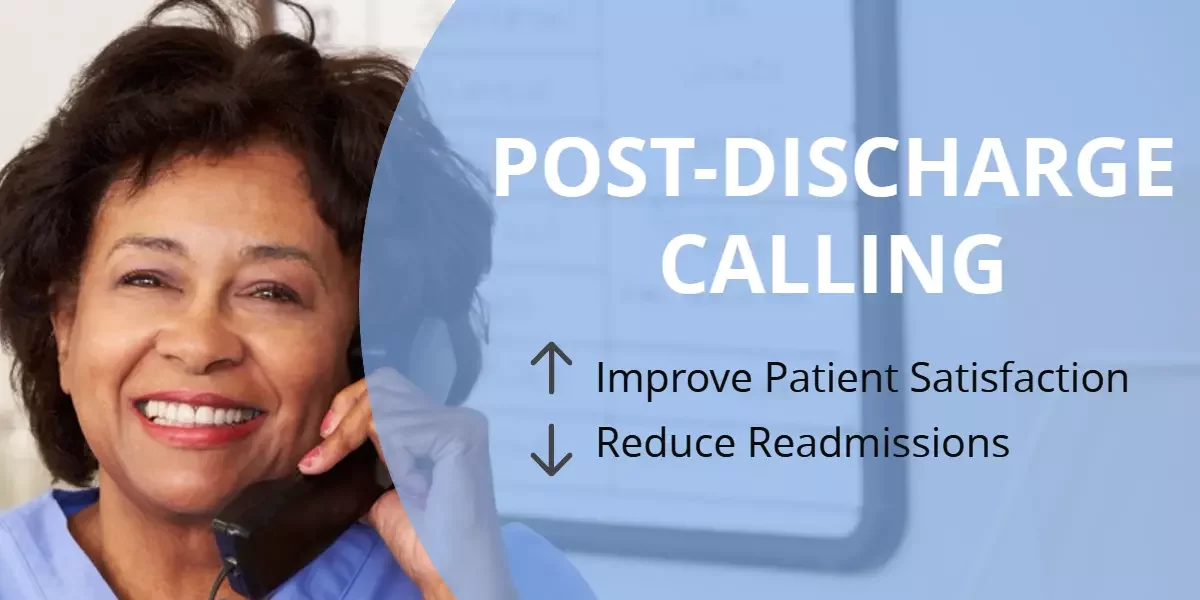
In 2015, hospitals spent billions of dollars on avoidable readmissions. A well-executed post-discharge calling program can help your facility reduce readmissions and improve patient satisfaction.
Consider these statistics: Multiple studies have shown around 20 percent of patients have a post-discharge event. Of these events, nearly 30 percent are preventable and 22 percent are ameliorable.
4 REASONS WHY POST-DISCHARGE CALLING WORKS
In addition to helping to reduce readmissions and improving patient satisfaction, post-discharge calling helps in other ways.
1. Confirm Patient Understanding, or Teach-back:
Most, if not all, patients (including the author of this blog post) leave the hospital at least partially confused. Simply reviewing discharge instruction papers with and handing the patient a hard copy when they’re being sent home is not enough to ensure adherence and understanding.
Using teach-back and carefully structured questions and prompts provide an effective follow-up care model that significantly assists patients in their transition from the hospital to the home setting.
2. Reduce Medication Confusion:
Almost every patient (yes, the author again!) will have some confusion about their medications. Reinforcing the routine and ensuring a good understanding of medications plays out in recovery.
Four out of 10 older people who take more than one medication do not take one or more of their prescriptions according to their doctor’s instructions.
3. Set Follow-Up Appointments:
Patients frequently miss or don’t make follow-up appointments. Calling and ensuring that follow-up appointments are made and using an effective process to check back with individuals who have not made their follow-up appointments is one of the building blocks to reducing readmissions.
4. Improve Patient Perception:
Patients know you are still concerned for their well-being once they have left the hospital. Make the call to ensure they are secure in their home setting and you will help improve your patient satisfaction scores just by doing the right thing.
BENEFITS OF EFFECTIVE DISCHARGE CALLING
Not only can effective post-discharge calling ensure the patient’s health and satisfaction, it also provides other benefits.
Increased Perception of Care:
It is a given that if a patient is contacted post-discharge, there will be a general increase in the perception of care. The qualifier is that the approach must be about their care issues, not a call to encourage them to tell you what a good job you did in the hope of a better HCAHPS score. If the approach is to support the delivery of care and make the patient feel supported, the HCAHPS score improvements will follow.
Reduction in Medication Errors:
Medication errors are present for approximately half of all patients after discharge, according to a study in Mayo Clinic Proceedings. The study also found that 59.2 percent of patients had a misunderstanding in indication, dose or frequency of a cardiac medication.
Reduction in Readmission Rates:
The study “The Impact of Postdischarge Telephonic Follow-Up on Hospital Readmissions” showed that the receipt of a discharge call was associated with reduced rates of readmission. Patients receiving timely calls were 23.1 percent less likely to be readmitted within 30 days of hospital discharge.
Effective post-discharge calling, along with other well-executed patient satisfaction strategies, will assist you on the path to sustainable improvement in your HCAHPS and CMS Star ratings.
Get a hands-on look at how an effective post-discharge calling program works, more benefits to having one and other information in this eBook.

